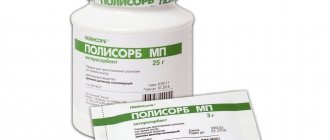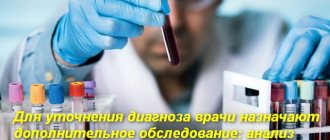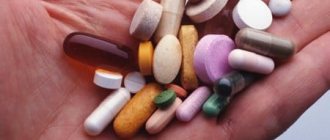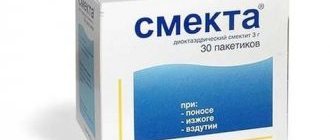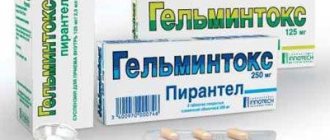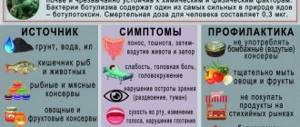Category: First aid and treatment
When people are poisoned, intestinal function is often disrupted. Recovery takes a long time. However, by using specific products it is possible to speed up this process. Similar medications include the drug Bifidumbacterin.
When used correctly, the medication helps to quickly cope with dysbiosis and restore normal intestinal microflora.
How to take Bifidumbacterin in case of poisoning, are there any contraindications for use?
Pharmacological properties of the drug Bifidumbacterin
The therapeutic effect of Bifidumbacterin is determined by living bifidobacteria, which have antagonistic activity against a wide range of pathogenic and opportunistic microorganisms. The predominance of bifidoflora in the microbiocenosis after using the drug normalizes the activity of the gastrointestinal tract, improves metabolic processes, stimulates the functional activity of the digestive system, prevents the development of protracted forms of intestinal diseases, and increases the body's nonspecific resistance.
Indications for use of the drug Bifidumbacterin
Bifidumbacterin is used to treat adults and children from the first days of life (including premature infants). Can be used during pregnancy and breastfeeding. Bifidumbacterin is prescribed for:
- treatment and prevention of intestinal dysbiosis resulting from antibacterial, hormonal, radiation and other types of therapy;
- in the complex treatment of acute infectious intestinal diseases (dysentery, salmonellosis, escherichiosis, viral diarrhea, etc.);
- treatment of convalescents after acute intestinal infections;
- treatment of intestinal dysfunction of staphylococcal and unknown etiology;
- in the complex treatment of acute and chronic intestinal diseases (enterocolitis, colitis) with microflora disturbances;
- children with aggravated premorbid conditions (including premature babies) who receive antibiotics in the early neonatal period;
- treatment and prevention of dysbiosis in children of all age groups (including premature infants), patients with pneumonia, sepsis and other purulent-septic diseases, anemia, rickets, malnutrition, etc.;
- treatment and prevention of dysbiosis in children whose mothers had severe toxicosis or other pathology of pregnancy, lactostasis, cracked nipples, mastitis and restoration of breastfeeding after recovery were noted;
- children with early transfer to artificial feeding or feeding with donor milk in order to prevent intestinal dysbiosis;
- treatment of dysbiosis and inflammatory diseases of the female genital area (bacterial vaginosis, including during pregnancy, bacterial colpitis caused by staphylococcus and intestinal tract, senile colpitis of a hormonal nature).
Diagnosis of food poisoning
Symptoms of food poisoning are similar to those of other diseases (bacterial and viral intestinal infections). But in case of poisoning, poor quality food always appears, and the infectious lesion immediately begins from the intestines.
The speed of development of symptoms does not leave doctors time to determine the exact cause of the disease, so treatment begins on the same day the patient is poisoned. In case of mass cases, when several or many people are poisoned, an epidemiological study is carried out to determine an accurate diagnosis.
If the patient is admitted to the hospital, a standard list of tests is performed - a general blood test, a general urine test, and bacteriological culture of stool. Sometimes ultrasound diagnostics of internal organs is performed if there is a suspicion of severe damage to them by toxins.
Use of the drug Bifidumbacterin
Bifidumbacterin is used orally for gastrointestinal diseases; in obstetric and gynecological practice - intravaginally and externally. To prepare the solution, the contents of one bottle or packet are dissolved in boiled water at room temperature at the rate of one teaspoon of water per dose of the drug. To do this, the required amount of the drug is dissolved in a clean, dry glass with the required amount of water until a homogeneous solution is formed (one teaspoon of solution contains one dose). Take 20–30 minutes before meals. The drug is given to infants during feeding, mixing the required amount with breast milk or baby food. Bifidumbacterin for therapeutic purposes is prescribed depending on age in the following doses:
Age
Dosing
Frequency of reception
Infants at risk (from the first hours of life)
Bowel upset can occur at any time in everyday life, and may not only be associated with food poisoning. There are many reasons for the development of diarrhea, so you should always have drugs on hand that can suppress unpleasant symptoms.
One of the auxiliary medications that normalize intestinal microflora is Bifidumbacterin. It is indispensable in the complex treatment of intestinal disorders, and also combines well with other medications. Will Bifidumbacterin help with diarrhea, how it should be taken and what to consider in treatment, we will analyze further.
Features of the child's body
There are many factors and reasons that can lead to poisoning in a child. It is worth noting that parental inattention and insufficient child supervision are the main causes of childhood poisoning. Left unattended medications, detergents, expired food - all this is dangerous for the baby.
The main causes of poisoning in children:
- Eating expired and improperly prepared food leads to foodborne illnesses. The child may become infected with salmonellosis, dysentery or E. coli;
- the child taking medications or chemicals found at home. The baby wants to taste everything he sees around him. He mistakes brightly colored tablets for candy, and floor cleaner for a sweet drink;
- mushroom poisoning. According to the dietary recommendations of pediatricians, mushrooms are prohibited for children under 12 years of age. But many parents begin to feed their offspring with them from an early age. The child's digestive system cannot digest mushroom proteins. A baby can be poisoned even by edible high-quality mushrooms;
- the child’s failure to comply with basic personal hygiene. Through dirty hands he can become infected with an intestinal infection.
What to give to a child in case of poisoning and vomiting before the ambulance arrives? Please note that at this stage it is very important not to harm the baby with your attempts to save him. Below is a description of what medications you can give your baby in case of food poisoning and how to help your child while waiting for doctors.
Poisoning in a child is more severe than in an adult. This is explained by the peculiarities of the development and structure of the child’s body. Below are the main factors that contribute to the occurrence of poisoning in children.
- Full production of saliva appears only at one year of age. Until this time, the baby is not protected by lysozyme, a protein that neutralizes some bacteria and protects against infections.
- Insufficient development of the immune system, which is necessary to protect the body from pathogenic microorganisms. Only at 3 years old does the child’s immunity begin to fully function.
- Intestinal microflora provides local immunity and protects against some intestinal infections. A baby is born with a sterile intestine, which fills with beneficial and essential bacteria during the first year of life. Already at 2 years old, children's intestinal microflora does not differ from adults.
- The acidity of gastric juice in children is lower, as a result of which the stomach is not fully protected from intestinal viruses and bacteria.
Treatment of a poisoned child must be carried out by doctors. When the first signs of poisoning appear, you should call an ambulance or take the baby to the hospital yourself.
You can provide your baby with first aid, which will help his condition improve slightly. It should begin immediately when the disease develops.
Mechanism of action
It is no secret that the intestinal microflora contains two types of bacteria:
- Pathogenic (in the minority) – with a significant increase in population, it can provoke dysbiosis and also provoke intestinal disorders.
- Conditionally pathogenic (in the majority) – helps inhibit the growth of pathogenic bacteria, and also participates in digestive processes.
They contain lactic acid and other types of bacteria that exhibit such positive effects on the body as:
- production of special components necessary for complete digestion and assimilation of food;
- regulate immunity, allowing you to avoid infection;
- participate in the synthesis of vitamins and hormones;
- block toxins and pathogenic substances, preventing them from being absorbed into the body and entering the general bloodstream.
Bifidumbacterin is activated directly in the intestines, providing a whole range of positive effects on the body:
- blocks infection, preventing the development of an extensive inflammatory process;
- accelerates the processes of digestion and absorption of nutrients;
- normalizes the flora of the mucous membrane;
- increases local and general immunity.
Causes of food poisoning
All food poisoning is caused by bacteria. Once in food products, bacteria multiply in them. The cause of poisoning is different types of opportunistic microbes. They are quickly and easily defeated by the immune system of a healthy body, and in the external environment they die under the influence of sunlight and high temperature.
As they multiply in products, they release toxic substances. Therefore, such poisonings have another name - food poisoning. When poisoning with spoiled food products, for example, cake or pastries, bacterial growth occurs and the release of poisons ingested with food occurs. It continues in the intestinal cavity, causing signs of intoxication.
Poisoning occurs most often in the warm season, when food is kept warm for some time. This happens in the following cases:
- Failure to comply with the rules for preparing and storing food.
- Getting germs into food from dirty hands.
- Spread of infection by flies feeding on human food.
There are products that, after 3-4 hours of violation of the temperature regime of storage, can cause poisoning. You need to be very careful with the following products:
- Pastry creams, cakes.
- Cold smoked meat products, lard, boiled meat, fish.
- Mayonnaise, cheeses, chips and pizza.
- Kvass from a barrel.
When eating the same dish, there may be a situation where one person gets poisoned, while another does not notice even the slightest symptoms. The reason is the uneven distribution of bacterial colonies throughout the entire volume of the dish. Accordingly, it is easier for someone who eats a fragment with the largest amount of bacteria and their toxins to get poisoned.
Does it help with diarrhea?
In cases where the cause of diarrhea is dysbacteriosis, provoked by long-term use of antibiotics, the use of Bifidumbacterin is appropriate. It is able to cope with pathogenic intestinal microflora, after which the symptoms of diarrhea will disappear on their own.
However, if diarrhea is caused by extensive intoxication or toxic infection, Bifidumbacterin alone is not enough. It is used in treatment, but as an auxiliary component of complex therapy. Initially, the emphasis is on antibacterial therapy.
Prevention of food poisoning
There is no vaccine against foodborne illness. It is impossible to ensure that poisoned food does not pose any danger to humans. All prevention consists of following certain rules:
- Sanitary control at catering establishments. The control service must monitor compliance with food preparation technology, storage of products, and compliance with sales deadlines.
- Checking workers who come into contact with food products for carriage of foodborne pathogens once every 6 months. Workers' hands are checked daily. If ulcers and pustules are detected, such an employee should not be at work. He is sent on sick leave. Upon completion of treatment, the employee must provide the company with a doctor’s certificate. Every entrepreneur in his company must organize such control.
- Maintain personal hygiene, timely cleaning of premises where food is stored and food is prepared. Control of rodents and cockroaches.
- Scald cutting boards with boiling water. There should be a separate board for each type of product so that, for example, particles of raw meat do not fall on salad vegetables.
- Do not store perishable foods for a long time at home, even in the refrigerator. After expiration date, discard unused products.
- Store products separately from household chemicals.
- When purchasing in a store, always pay attention to the expiration date and storage conditions.
- Dairy products must be fresh, and milk must be boiled or pasteurized.
- Drink only boiled water.
- In hot weather, it is better not to eat in cafes and street tents.
Gastroenterologist, PhD. Graduated from the First Moscow State Medical University named after. I. M. Sechenov in 2010. Place of work - Medical
News MirTesen
Composition and release form
- Capsules for oral administration - have a hard gelled shell, which allows you to preserve lactobacilli from the harmful effects of the aggressive environment of the stomach. The composition includes more than 100 species of various bacteria, as well as gelatin, magnesium stearate, starch. The cost of 5 doses (30 pcs.) is 240-250 rubles.
- Dry powder for oral administration - produced in bags. They have a similar composition. Cost 10 pcs. is 150-160 rubles.
- Vaginal suppositories - the composition includes a fatty base, which allows bacteria to spread evenly throughout the vaginal mucosa. Cost 10 pcs. is 380-400 rubles.
- Rectal suppositories - have a similar composition. The cost of packaging barely reaches 100 rubles.
- Lyophilisate - bifidobacteria are packaged in a glass, hermetically sealed bottle. Cost from 85 rubles.
Price
The cost of a medicine is based on the markup of the pharmacy and the region of sales. The cost may vary significantly in different regions. For example, consider Ukraine and Russia. The instructions show the average price; for more information, please contact a specific pharmacy or online store.
Russia
The price for the drug Bifidumbacterin (10 bottles) is about 950 rubles. You can buy this medicine in tablets for 90 rubles (30 pcs). For candles (10 pieces) you need to pay 110 rubles. For ampoules for newborns you need to pay an average of 100 rubles.
Ukraine
The drug Bifidumbacterin (powder) costs 60 hryvnia. On average you will have to pay 65.38 hryvnia for ampoules. For the liquid form of the drug Bifidumbacterin you will have to pay 250.45 hryvnia. Candles in Kyiv pharmacies can be bought for 100 hryvnia.
Video on the topic: Bifidobacteria
Dosage and application regimen
Bifidumbacterin for diarrhea is not used in the form of suppositories, since the suppositories will not have time to activate before their components, along with loose stools, come out.
Most often, for diarrhea, they resort to capsules and powder. It is recommended to take 1-2 capsules three times a day, before or during meals. The duration of treatment depends on what exactly caused the development of diarrhea.
The effectiveness of the drug directly depends on how correctly it is used. If you have an acute intestinal infection, a probiotic alone will not be enough. Accordingly, treatment and dosage selection should not be done at home. Only a doctor can identify the cause of diarrhea, as well as select the most effective treatment.
In cases where diarrhea is infrequent but persists for a long time, oral administration is combined with rectal administration of suppositories.
Drug interactions
The instructions emphasize that the use of Bifidumbacterin with antibiotics is prohibited. Beneficial microorganisms will die when used in combination; before taking the drugs, you must pause for 1–2 hours.
But this rule applies only to systemic therapy, when taking tablets, drops, intramuscular or intravenous injections. If antibacterial agents are needed for local therapy, for example, injections are given to treat superficial infiltration, there is no effect on the intestines and joint use is allowed.
According to the instructions, the effectiveness of Bifidumbacterin is significantly enhanced when used with B vitamins.
What other drugs complement the treatment?
It is worth understanding that this drug cannot be used as the main medicine for diarrhea. It is able to normalize the intestinal microflora, but it cannot completely overcome pathogenic microflora or eliminate intoxication.
If diarrhea is infectious, treatment should be supplemented with such groups of drugs as:
- Antibiotics that can suppress pathogenic intestinal microflora, as well as reduce the level of toxins in the blood: Cefazolin, Ceftriaxone, Amoxiclav.
- Enterosorbents - neutralize toxins released by bacteria, gluing and neutralizing them, preventing absorption into the blood: Polysorb, Sorbex, Laktofiltrum.
In cases where diarrhea has other causes, including neurological disorders, treatment is supplemented with drugs that inhibit intestinal motility, reducing the sensitivity of the nerve endings of the mucous membrane.
Consequences of food poisoning
If food poisoning is prolonged, the patient may experience complications that are very difficult to cure:
- Intestinal dysbiosis is the death of beneficial microflora.
- Blood poisoning. When the immune system is weakened (which is facilitated by an unhealthy lifestyle, alcohol, smoking), the intestinal wall ceases to protect against bacteria entering the blood. Microbes cause sepsis, a life-threatening condition.
- Infectious-toxic shock. It can be triggered by the entry into the blood of a large number of toxins, which cause paresis of the vascular walls up to general cardiovascular failure.
- Hypovolemia and hypovolemic shock. Due to a decrease in circulating blood volume, cardiac output decreases, which affects all tissues of the body. An acute condition - hypovolemic shock - is life-threatening and requires urgent medical intervention. Breathing problems, dizziness, and possible loss of consciousness occur.
Contraindications
The drug contains bacteria that are identical in nature to those found in the body. Therefore, the drug is well tolerated by patients, causing virtually no adverse reactions. It is extremely rare that an allergic reaction can occur when an adult or child is intolerant to lactobacilli. In this case, there is no therapeutic effect, and reactions such as:
- hives and itchy skin (mainly hands and feet);
- difficulty breathing and swelling of the mucous membranes;
- anaphylaxis.
special instructions
Since the drug acts locally and does not spread to the entire body, bypassing the general bloodstream, it can be used in patients (adults) who have problems with the liver and kidneys.
A significant decrease in the effectiveness of the drug is observed if:
- take the medicine with hot water or tea;
- take simultaneously with antibiotics;
- store solutions of bifidobacteria in water for more than 5 minutes.
Single dosages are not able to produce the desired result. Also, you should not take medications that have been stored for a long time in a hot, humid place, which increases the likelihood of developing pathogenic microflora.
Types of food poisoning
The following types of food poisoning are distinguished:
- Toxicinfections of mixed nature (products contaminated with enterococci, E. coli).
- Specific toxic infections: botulism and salmonellosis. Botulism can survive in canned food. Even stewed meat can cause poisoning. The consequences of such intoxications are extremely severe, including death.
- Intoxication of non-microbial origin. They occur when consuming inedible mushrooms, poisonous berries, and garden plants grown with an excess of synthetic fertilizers. This also includes poisoning by products that were stored in low-quality plastic containers and saturated with toxic plastic (polystyrene, polyvinyl chloride).
READ ALSO: Rashes in the form of blisters: causes, symptoms | Food and Health
Reviews
Many patients note that Bifidumbacterin can be used not only by adults, but also by children. It has a gentle effect on the intestinal mucosa without causing gas formation, which is characteristic of many probiotics of a similar composition. You should not give the medicine without consulting a doctor, as the wrong dosage may be ineffective.
When compared with analogues, Bifidumbacterin is more accessible to the average resident of our country. When other symptoms appear along with diarrhea, it is better to stop taking the drug and consult a doctor.
Statistics show that in 99% of all cases the drug is well tolerated without causing the development of adverse reactions. It has several forms of release, which makes it easier to take for each specific situation.
Patients also indicate that the drug can be used not only when diarrhea is a concern. The range of its influence is much wider. It is effective in proctology and gynecology, and is also used before operations and childbirth.
Thus, it becomes clear whether Bifidumbacterin helps with diarrhea. If taken correctly, the unpleasant manifestations of dysbiosis will disappear after 6-7 days. Continuing to take the medicine will help strengthen the body and make the immune system more stable. The drug is effective as part of complex therapy, and can also be used as prophylaxis in patients suffering from reduced immunity with an increased risk of acute respiratory infections.
Be sure to check out this interesting review about this drug.
Analogs
If it is necessary to replace Bifidumbacterin, the following drugs are most often recommended for use:
- Bififol;
- Probifor;
- Normoflorin B.
The range of probiotics with bifidobacteria is quite wide. The doctor, focusing on the instructions, as well as individual indicators, will definitely recommend the optimal analogue option, for example, Bifidum-Multi-1, intended for colonizing the intestines of patients under 3 years of age with bifidobacteria.
Instructions
- Russian
- Kazakh
Tradename
International nonproprietary name
Dosage form
Lyophilisate for the preparation of suspension for oral and topical
Compound
One dose contains
active substance – live bifidobacteria of at least 107 CFU,
excipients: lactulose, sucrose, gelatin, skimmed milk powder.
Description
Crystalline or porous mass with possible stratification of biomass in the upper part, beige or whitish in color, with a specific odor.
Pharmacotherapeutic group
Antidiarrheal drugs. Antidiarrheal microorganisms.
Pharmacological properties
The drug is not absorbed from the gastrointestinal tract into the blood and acts locally.
Pharmacodynamics
The drug is a microbial mass of living, antagonistically active bifidobacteria strains Bifidumbacterium bifidum No. 1, 791 lyophilized in a cultivation medium with the addition of a protective sucrose-gelato-milk medium. The medicinal properties of bifidumbacterin are determined by the living bifidobacteria it contains, which have antagonistic activity against a wide range of pathogenic and conditionally pathogenic microorganisms. The high quantitative level of bifidumbacteria in the preparation makes it possible to normalize the intestinal microflora and thereby improve the activity of the gastrointestinal tract, metabolic processes, parietal digestion, and increase the nonspecific resistance of the body.
Indications for use
long-term intestinal dysfunctions of various etiologies
acute intestinal infections as part of complex therapy
dysfunction and intestinal dysbiosis in newborns, incl. premature babies with a burdened premorbid background, receiving antibiotics or milk from mothers who suffered severe toxicosis, with extragenital diseases, had a long anhydrous period or other pathology; from mothers with lactostasis, cracked nipples or who have resumed breastfeeding after mastitis
How to use?
The drug is taken with meals 2 times a day. Before taking the bottle, shake it to mix the mixture, then it should be diluted in a small amount of liquid and washed down with water or milk. Adults and children over 7 years old can take 3-5 ml. For newborns, a dosage of 3-5 drops 3 times a day is provided. Children from 1 to 3 years old are allowed to take 10 drops, and from 3 years old the dosage is 20 drops. It should be taken into account that 1 ml of liquid is equal to 20 drops.
If necessary, the concentrate is used for enemas and soaking tampons, restoring the vaginal microflora. For an enema you will need 50 ml of warm water, in which 3-5 ml of solution is diluted. The swab is first moistened in water or saline, and then the concentrate is added. During lactation, women can apply a bandage soaked in the drug to the nipple area. The duration of use is 10-12 days.



